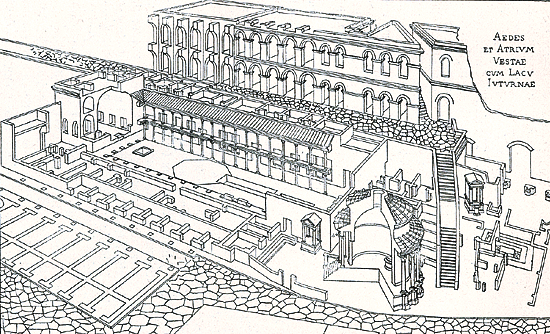
You are required to stop here, for this is the residence of the six Vestal Virgins, and off-limits to all but the Pontifex Maximus and other important religious and political officials. For more information on the role of the priestess and the worship of Vesta, continue west to the Temple of Vesta.
Development of the site dates back to the seventh century BCE. Eventually a very large structure (115m by 53m) (see plan), it served as the home for the six priestesses who tended to the worship of Vesta. The Via Nova runs along its northern side on the flank of the Palatine hill; because of its elevation, you must climb stairs to reach it. Under Nero, Trajan, Hadrian and Commodus, the precinct was rebuilt, reorganized, and expanded. The most striking feature was the central open area where a long pool was lined by statues of the Virgines Vestales Maximae, the chief vestals (find out more about these statues and inscriptions.